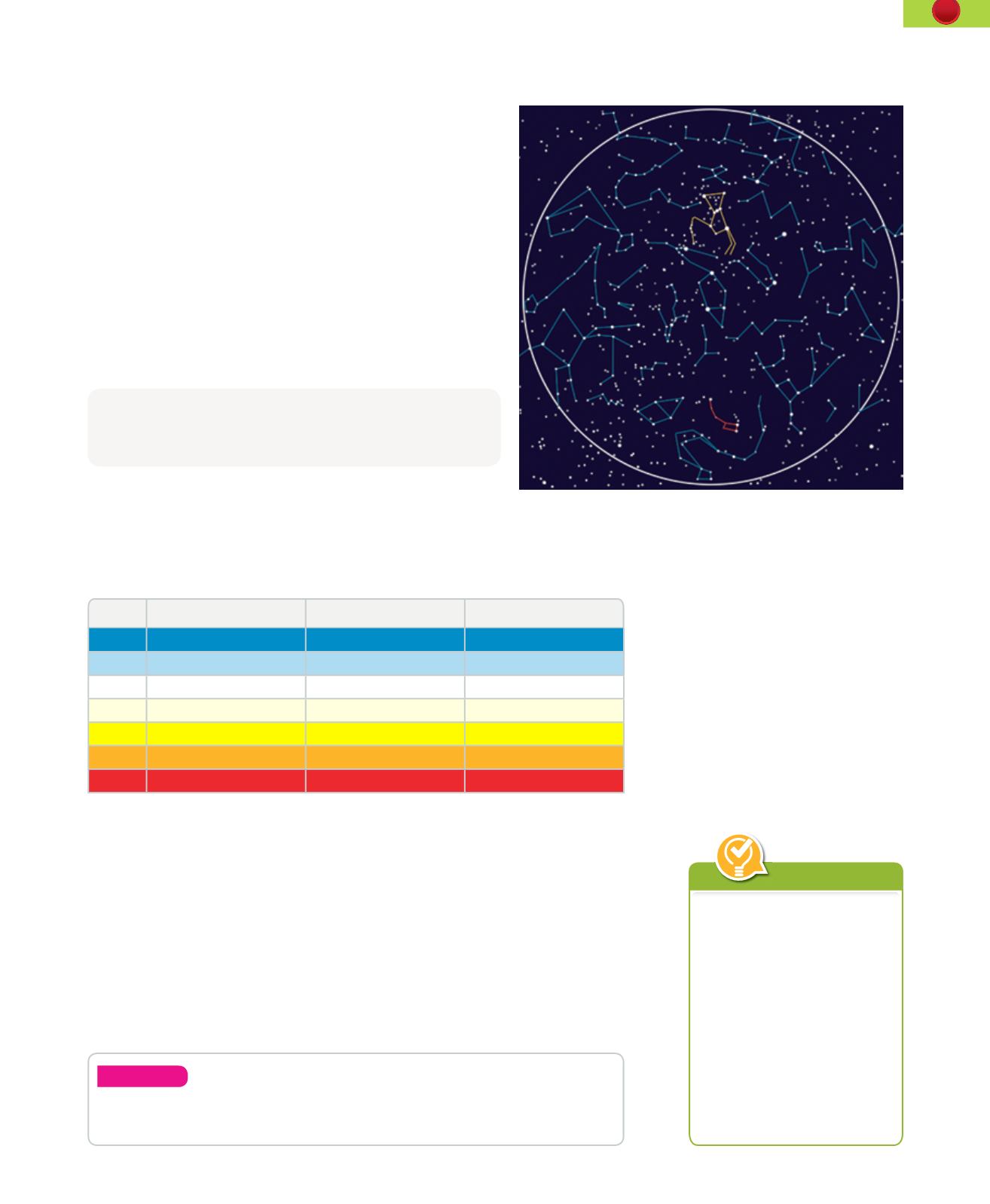
29
2. The Earth in the Universe
www
2.2.
The night sky: the constellations
All the stars we see in the night sky belong to the Milky Way.
They are the part of the Milky Way that is visible from Earth.
Each star is a different distance from Earth, but with the naked
eye
2
we can’t perceive the depth and they all appear to be the
same distance away. As a result, stars appear to be close to each
other, but in reality, they are far away from each other. Due to this
perception, the stars in the Milky Way appear to be grouped in
different imaginary shapes. These are called
constellations
. Not
all constellations are visible from any place on Earth or at all times
of the year. From the Northern Hemisphere we can only observe
37 of the 88 constellations.
2.3.
Stars
A nuclear reaction inside stars called
nuclear fusion
occurs. This
results in the release of a lot of energy in the formof light and heat.
Stars are distinguished by their colour, size and brightness.
❚
The
colour
of a star is defined by its surface temperature.
Type
Temperature (ºC)
Colour
Example
O
> 30 000
Violet-blue
Naos
B
10 000-30 000
Blue
Rigel
A
7 500-10 000
White
Vega
F
6 000-7 500
White-yellow
Protion
G
5 000-6 000
Yellow
Sun
K
3 500-5 000
Orange
Arcturus
M 2 000-3 500
Red
Betelgeuse
As a star consumes the hydrogen it contains, it changes colour, until the hydrogen
is used up
3
and the star dies.
❚
The
size
of a star is measured relative to the Sun. Stars that are bigger are called
giants
; stars that are the same size are
medium-sized
and stars that are smaller
than the Sun are called
dwarf
stars.
❚
The
brightness
of a star varies according to how far away it is, the quantity of
energy it releases and its size.
Stars form groups called
star clusters
. These clusters can be very dense (
globular
clusters
); or less dense, formed by disperse stars (
open clusters
). Some stars attract
different bodies and form a planetary system. This is the case of our Solar System.
Stars
are large spheres of gas spheres made mostly of
hydrogen and helium. Stars release energy in the form
of light and heat.
Constellations of the North Hemisphere
Key concepts
❚
The Milky Way is a spiral
Galaxy that belongs to a
galaxy cluster called the
Local Group.
❚
The Milky Way has a nucleus
of old stars, a disk with four
spiral arms and a halo.
❚
The constellations are groups
of stars seen from the Earth
that form imaginary shapes.
❚
Stars are large spheres of
gas that emit light and heat.
Analyse
13.
Which star is brighter: a dwarf or a giant star? Discuss and explain
your answer.
71
2
naked eye
:
sight not assisted by
a telescope
3
use up
:
to consume completely


